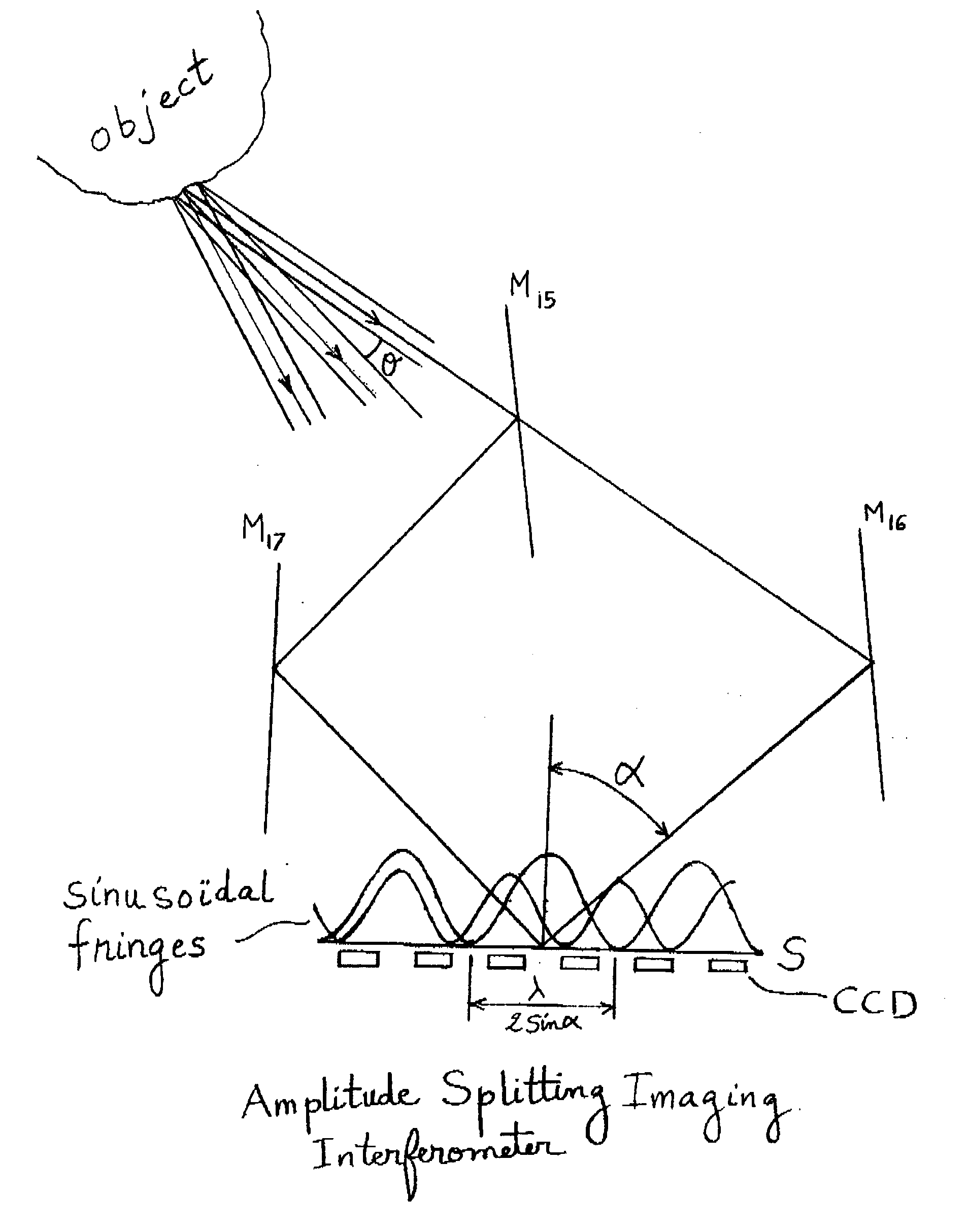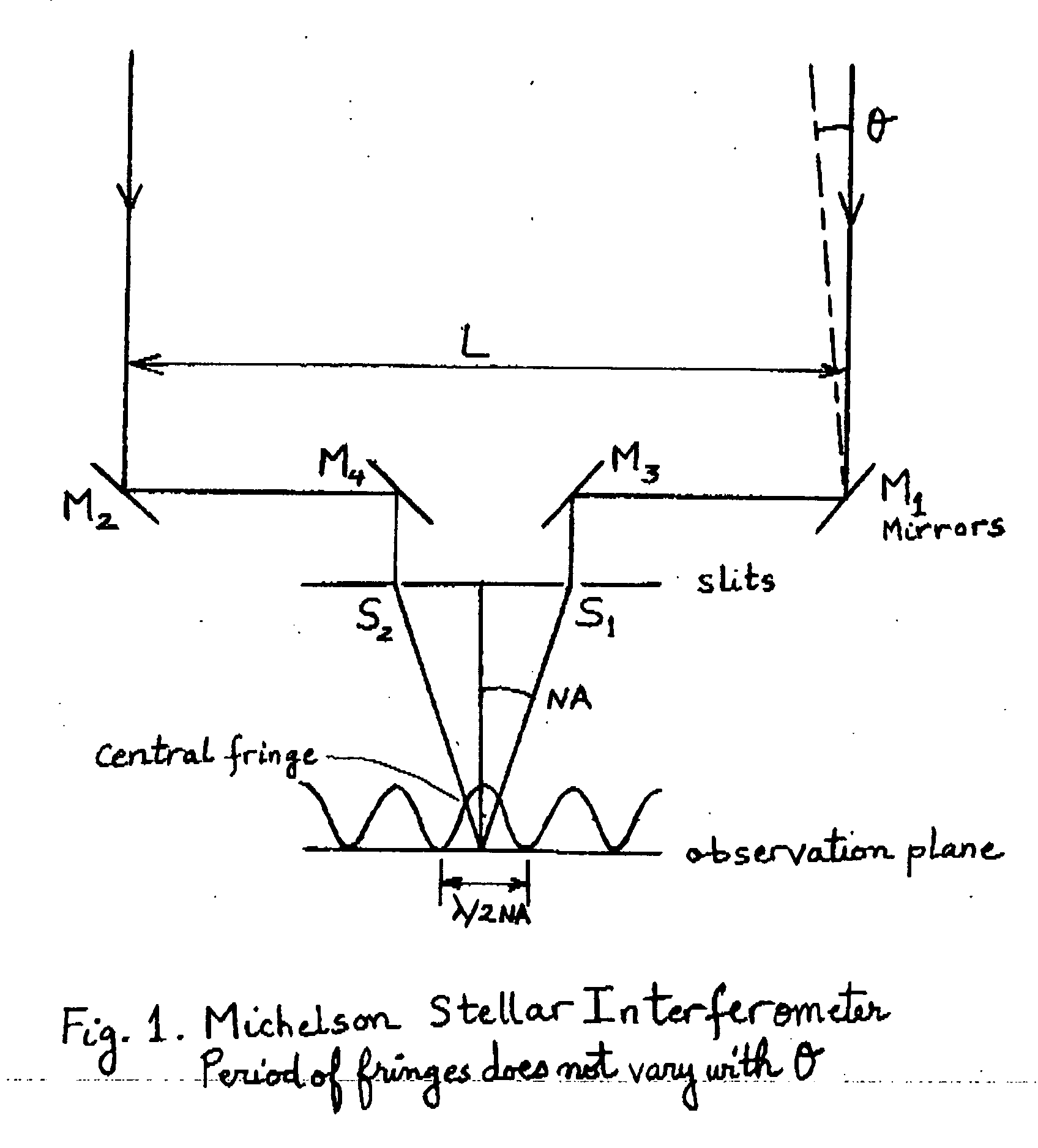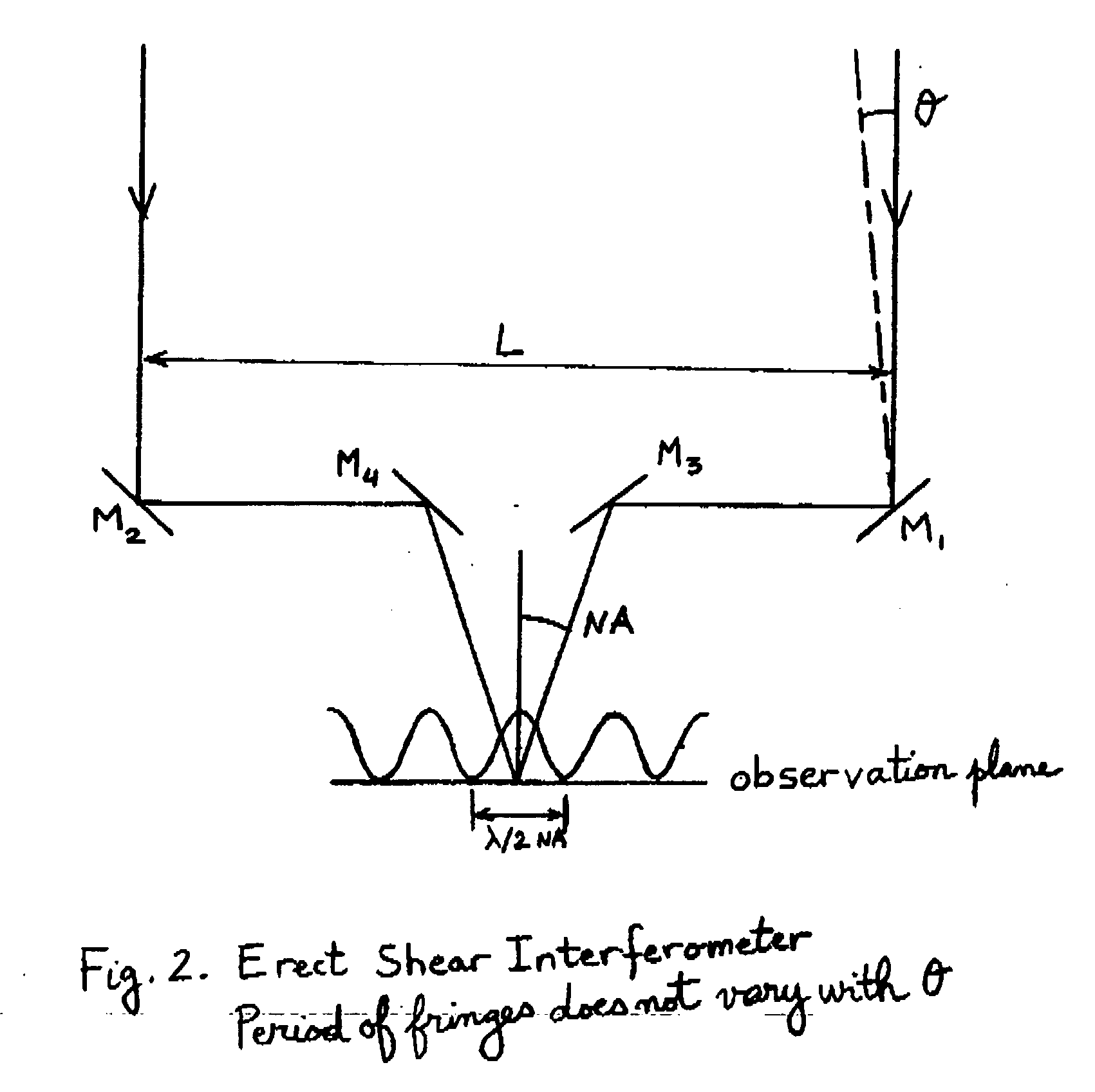Interferometric imaging with reduced aperture
a technology of interferometric imaging and aperture reduction, which is applied in the field of imaging systems, can solve the problems of inability of such systems to reproduce a perfect image, degradation of the performance of coherent imaging systems, and increase in the size of the aperture of a lens or primary parabolic mirror, etc., and achieve the effect of enhancing the resolution of optical imaging systems
- Summary
- Abstract
- Description
- Claims
- Application Information
AI Technical Summary
Benefits of technology
Problems solved by technology
Method used
Image
Examples
example 1
[0057] As an example the parameters ƒ1, ƒ2, X1, and L1 are chosen as follows: ƒ1=ƒ2=ƒ, X1=0.828ƒ, and L1=0.414ƒ, where ƒ is an arbitrary number, which provides a length scale of the interferometer. Then we obtain L2=0.417ƒ, dθ2 / dθ1=1.828, and L2dθ2=1.841L1dθ1. Thus, L2dθ2−L1dθ1=0.841L1dθ1.
example 2
[0058] As another example the parameters are chosen as ƒ1=ƒ2=ƒ, X1=ƒ and L1=ƒ. This yields L2=0.914ƒ, dθ2 / dθ1=1.656, and L2dθ2=1.514L1dθ1. Thus, L2dθ2−L1dθ1=0.514L1dθ1.
[0059] These examples demonstrate that it is possible for the phase to retain angular sensitivity even when the two beams A1 and B1 are merged into a single wavefront C, whose cross-section is much narrower than the distance L1 between A1 and B1. The incident wavefront C is split internally to create the two beams A1 and B1. Beams A2 and B2 set up a system of spatial fringes in the vicinity of mirror M9, which picks up the phase at its location and recombines the beams. The results of Examples 1 and 2 indicate that the phase angular sensitivity L2dθ2−L1dθ1 varies with the offset X1 between the incident beam A1 and the optical axis E1. This is due to the variation of the spatial frequency of the fringes with the angle of incidence. Thus, a different angular sensitivity is obtained by moving mirror M9 to a different lo...
example
[0099] An aperture of 1 meter provides an angular resolution of 5×10−7 radian at a wavelength of 500 nanometers. The corresponding spectral resolution is 10-11 meter or 0.1 Angstrom for a fringe period of about 20 μm compatible with current CCD pixel fabrication technology. This could accommodate 100 channels per nanometer of bandwidth, which is adequate for multi-spectral and hyper-spectral imaging applications.
PUM
| Property | Measurement | Unit |
|---|---|---|
| diameters | aaaaa | aaaaa |
| angle | aaaaa | aaaaa |
| wavelength | aaaaa | aaaaa |
Abstract
Description
Claims
Application Information
 Login to View More
Login to View More - R&D
- Intellectual Property
- Life Sciences
- Materials
- Tech Scout
- Unparalleled Data Quality
- Higher Quality Content
- 60% Fewer Hallucinations
Browse by: Latest US Patents, China's latest patents, Technical Efficacy Thesaurus, Application Domain, Technology Topic, Popular Technical Reports.
© 2025 PatSnap. All rights reserved.Legal|Privacy policy|Modern Slavery Act Transparency Statement|Sitemap|About US| Contact US: help@patsnap.com



